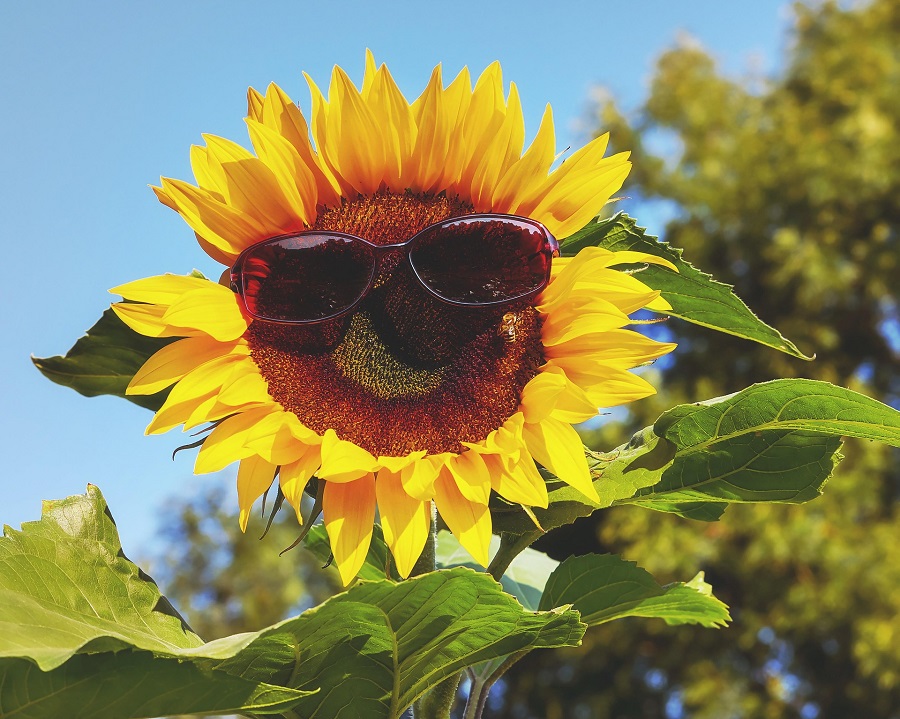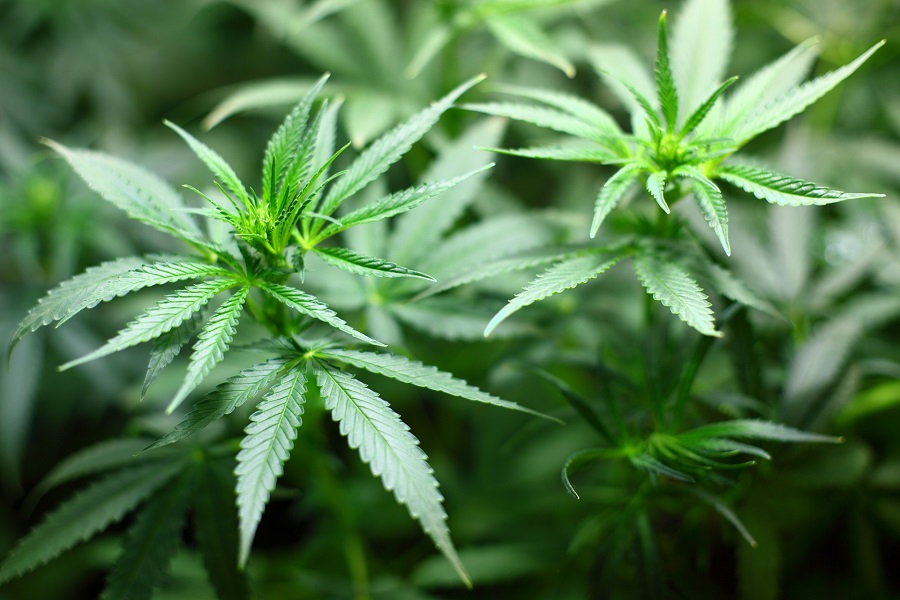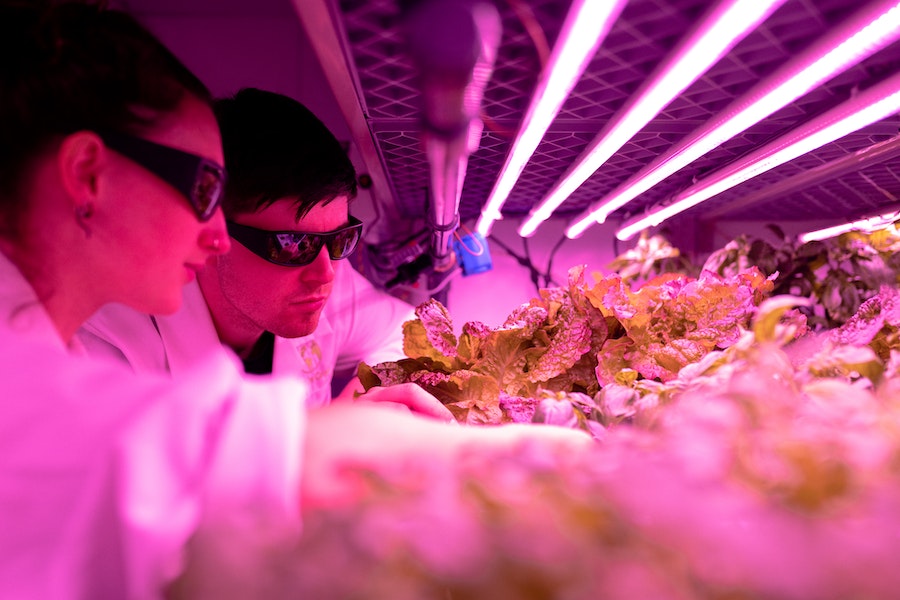The Benefits Of Ultraviolet(UV) Wavelength LED Grow Lights Effect For Plants
As gardening enthusiasts, we often hear a lot about ultraviolet grow lights and the UV spectrum in general. The amount, type, and reliability of the information we get on the matter can vary greatly. It can be well-substantiated articles from scientific groups or hearsay from our colleagues in the gardening industry. One thing is for sure, though; there’s no denying that different light types impact the growth of our plants. We already know red wavelengths are essential during the flowering phase, while blue wavelengths aid in growing vegetables.
Then there’s the whole full-spectrum wavelength that boosts photosynthesis and is crucial for maturing seedlings. But what place does the ultraviolet wavelength have in our plant-growing activities? It has an essential role. Ultraviolet benefits indoor gardening tremendously, but only if you understand how to use this spectrum to the max.
Accompany us in this blog entry as we delve into the perks of applying the right amounts of ultraviolet grow lights. We’ll try to clarify as many UV-related queries as you have while at the same time providing lots of insight into the use of LED lamps in indoor gardening as well.
Understanding Ultraviolet Light
Before we go deeper into the topic, let’s first understand UV light. Ultraviolet light is one of the many types of electromagnetic radiation emitted by sunlight. Wavelength in nanometers is how one measures light. The UV wavelength, in particular, is invisible to the naked eye and sits between 0 and 400 nanometers within the light spectrum.
In comparison, the visible spectrum falls somewhere between 400 and 700 nanometers. While our eyes cannot perceive this UV spectrum normally, exposure to it can affect organisms in various ways. The effects can be positive or negative depending on the intensity and time of exposure to the UV wavelength.

What Types of UV Light Exist?
The UV light spectrum includes three different types of light according to their specific wavelength range. These lights can have varied effects on both plants and humans. In general, you can expect the UV spectrum to consist of the following:
- UV-A
Located between 400 and 315 nanometers of the light spectrum, UV-A is the most common spectrum of UV light on Earth. It makes up around 98.7% of all the UV light from the sun. Plants in their natural environment typically receive high levels of low-intensity UV-A. Most studies indicate that continuous exposure to UV-A is not damaging to plants.
When it comes to ultraviolet grow lights, those that contain UV-A as part of their spectrum won’t damage the DNA of your plants. If anything, it may raise certain properties if you use it at the right time. Notably, when it comes to cannabis, it can cause a notable boost in the plant’s production of CBD (cannabidiol) and THC (tetrahydrocannabinol).
Be aware that short, diffused doses of UV-A light cause no damage to the human body. However, continuous exposure to intense bursts of it can trigger the development of skin cancer.
- UV-B
Between the electromagnetic ultraviolet spectrum ranging from 314 to 280 nanometers sits UV-B. This UV light spectrum is the one responsible for the creation of oxygen and the regeneration of the ozone layer. It represents about 1.3% of the UV light emitted from our sun. Adequate doses of UV-B can positively affect your indoor grow room.
This type of ultraviolet light benefits plants by encouraging them to produce their own natural sunscreen that differs from one species to the next. In the case of cannabis, it boosts the production of trichomes, terpenes, and colors. In addition, a healthy dose of UV-B can protect plants against fungal infections and other unwanted pests.
Now, UV-B’s effects on humans occur in two ways. On the one hand, it facilitates the production of vitamin D, an essential nutrient. On the other, it damages the skin, eventually leading to skin cancer.
- UV-C
Finally, this ultraviolet light spectrum sits between 280 and 0 nanometers. UV-C is not naturally present in our atmosphere as the ozone layer completely absorbs it. Zero amount of this specific spectrum of UV light reaches the Earth’s surface. Since it doesn’t permeate the ozone layer, thankfully, plants never receive any amount of it. Why is that a good thing? Well, because this wavelength can be severely damaging to them. Therefore, they shouldn’t have it around them.
That said, UV-C can be useful for sanitizing workrooms from microorganisms. It also does excellent work sterilizing water since it kills anything that receives adequate exposure. And yes, that can include your plants, too, if you’re not careful. Most UV grow lights don’t have this light spectrum.
UV-C is notably hazardous to humans and can cause lesions, burns, and redness. Long-term exposure to it leads to visible signs of aging and a considerable risk of skin cancer.
Does UV Light Aid Plants in Growing Better?
Yes, it does. But only when the plants receive proper doses of UV-A and UV-B. The development of plants can be notably affected for the better with the use of UV plant lights. Several studies have shown that ultraviolet can regulate plants’ growth by helping them produce more oils and resins. These not only protect them against harmful ultraviolet exposure but also assist in keeping ideal growing conditions.
Let’s carefully go over the details of some of the advantages you can expect to get from implementing ultraviolet grow lights in your indoor garden:
- Faster Photosynthesis
Using proper dosages of UV-A can lead to a more efficient photosynthesis process, which results in better, faster plant growth. Research has shown this spectrum of ultraviolet light increases the size of leaves and improves overall growth and dry weight. Applying a UV LED grow light that includes UV-A will result in plants with better physical characteristics.
- Improved Resin Production
Applying ultraviolet to grow plants can also result in the boosting of its resin production. Crops that receive the correct amounts of UV light have an increased presence of flavonoids and terpenes, which results in richer colors and a better smell. Plants produce this protective resin when hit with a controlled amount of UV wavelength. This resin prevents the plant from losing excess water and protects it from other factors that could jeopardize its health, like pests or infections.

- Tastier Produce
This perk hit will hit home for those who love growing their own food at home. As mentioned earlier, the right amount of ultraviolet benefits your plants in their flavonoids and terpene production. These two collectively make for better-tasting flavors from your plant’s produce. Are you looking for a rich flavor from your plant’s yield? Well, UV plant lights can help you with that!
- Pest Safeguard
The UV light spectrum can also protect your plant from the appearance of aggravating pests and other harmful elements. Thanks to increased resin production, you can keep your plant safe from anything that might want to nibble on it or any mysterious ailment that seeks to undermine its produce. UV light can help in obtaining extraordinary, healthy yields.
- Boost Root Development
Interestingly enough, UV light benefits your plant’s root growth. Believe it or not, this light spectrum can actually reach the roots of your plants, helping increase their mass significantly. The ultraviolet wavelength can reduce the need for additional supplements regardless of where you decide to cultivate it. Roots will be naturally healthier and more robust, helping them develop even under challenging conditions.
More Perks From UV Lighting
By making use of proper UV grow lights, you can tap into the many advantages these photons offer. You can give your indoor growing plants the same benefits as the ones growing outside, if not more. If the abovementioned perks don’t excite you, this next section will. Here, you’ll learn what you can obtain when applying the correct amount of ultraviolet light wavelength to your crops.
For example, did you know that ultraviolet benefits the germination process of starting seeds? That’s right; it speeds up this process by strengthening the plant and preparing it for high-intensity light. Transplanted seedlings moving from low-intensity to high-intensity light can suffer a sort of stunt or shock that slows down their growth. You have probably noticed this when moving a plant from indoors to outdoors. However, proper exposure to the ultraviolet light wavelength in the early stages of the plant’s growth reduces its shock period and speeds up its germination.
Additionally, UV plant lights can cause more branching and less stretching while at the same time increasing the potency of the plant’s natural properties. The effect might not be the same across the board, and changes to the amount of UV applied to a particular strain and species might result in different outcomes. Nevertheless, researchers are still working on this subject to know the full benefits of UV light.

Which Ultraviolet Grow Light Is Best for Plants?
From everything we’ve discussed so far, it should be clear that you should stick to choosing UV grow lights that only make use of the UV-A and UV-B spectrums for your plants. Using these will ensure the proper development and growth of your indoor garden.
Be mindful that the exact amount of exposure to UV wavelength your plants need will vary depending on their species. That is, you should bathe your plants in these lights only for a certain amount and intensity and at a specific moment of their maturing cycle. For example, in the case of cannabis, ultraviolet lamps enhance trichome production to high levels but only during the final weeks of flowering.
Regarding UV-C, research suggests it could help certain species grow in height and stimulate their defenses when used in minimal doses. But for the most part, you should try avoiding any UV plant lights that include this spectrum, as it could be damaging to both your crops and you. If you’re thinking about using UV-C for its efficient disinfection techniques for your grow space, please consider safer alternatives.
Artificial UV grow lights for plants often include the UV spectrum to assist in the plant’s development. You can find this spectrum in both metal halide and ceramic metal halide bulbs. They all produce low levels of UV light to boost plant development. Ideally, invest in modern grow light technology, like LED ultraviolet lights, as these are energy-efficient, help extend the growing season of plants, and improve their quality of life. Applying LED grow lights with UV will also yield better crops.
Safety Considerations When Using UV Grow Lights
Staring straight into your UV lamps for plants, just like looking directly into the sun, is a big no-no. The intensity of these light sources could cause irreversible damage to your eyesight. Continued exposure to UV radiation is hazardous for humans without any sort of protection. Controlling the exposure time and intensity of your ultraviolet grow lights is essential to avoid bleaching or burning your plants. Additionally, growers should wear glasses and long sleeves to protect themselves when handling these light sources.
One other thing that we have to emphasize is that, yes, UV plant lights benefit growth, but they can still cause damage if you don’t use them adequately. Going out of your way to put your plants under a sun tanning lamp will not magically result in giant produce! Sun tanning lamps provide massive amounts of UV light. Exposing your plants to that much UV light will quickly kill them. What you need are perfectly-suited UV lights for indoor plants.
Responsible growers should provide their plants with full spectrum lights that emit the right amounts of UV photons necessary for healthy growth. The idea is that the full spectrum UV lights for plants you’re buying are able to mimic the ideal natural sunlight found outdoors to make plants feel as if they’re growing in nature. The objective is to create a setup that optimizes their growth and development.

Final Words
We can gather from this that both UV-A and UV-B in the ultraviolet spectrum are essential for plants to grow. Their development receives a significant boost due to the increased production of resin and an improved photosynthesis process. These two working in conjunction are responsible for stronger roots, healthier-looking leaves, fresher and tastier produce, and faster overall growth. Achieving this is only possible by applying the right amount of ultraviolet light wavelength.
However, please take into consideration that plant species run far and wide; they may not all produce a specific amount of resin or achieve faster photosynthesis. Therefore, checking if and how UV will benefit your plant is vital. Your UV grow lights’ position, structure, intensity, and height will also directly affect the growth process.
Reaching the tail end of this article, you must have learned a lot about the effect of the UV spectrum on plants. As you can see, the positive and negative effects depend on your approach and how you decide to use ultraviolet light to grow plants. Stick to the best, most sensible practices for your indoor garden operation and choose the ideal UV LED grow lights you need. Doing so will guarantee your plants will grow as healthily as they can!